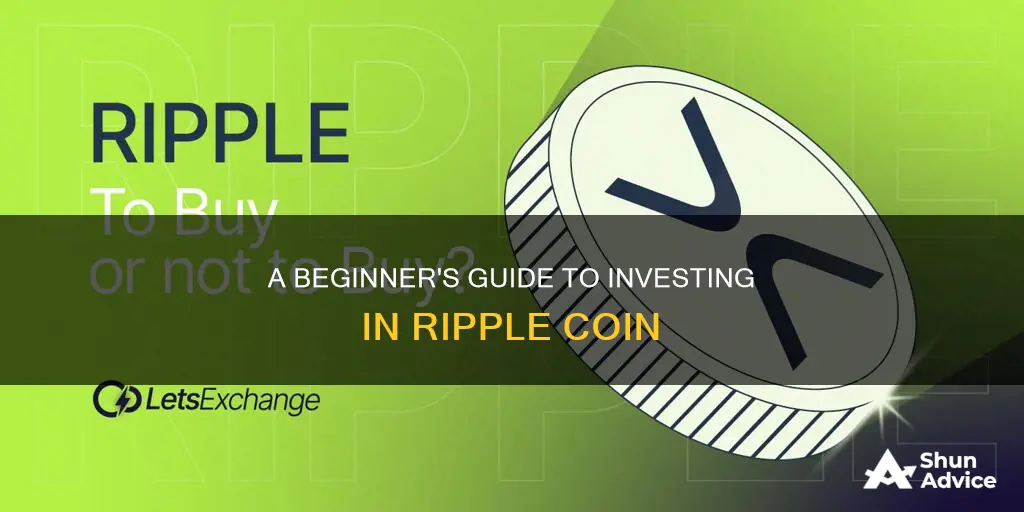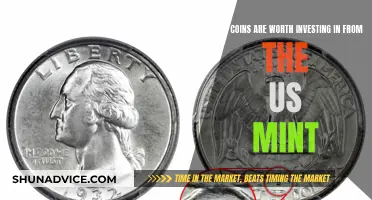
Ripple (XRP) is a cryptocurrency that runs on a network called the XRP Ledger, which is owned by a company called Ripple. It is the 6th or 7th most popular cryptocurrency and can be purchased on most crypto exchanges, including Bitstamp, Kraken, Huobi Global, Coinbase, Binance, and eToro. XRP is faster and more efficient than any other digital asset, offering financial institutions a quick and reliable option for sourcing liquidity on demand. It is also less energy-intensive than Bitcoin. However, it is important to note that investing in cryptocurrency is a high-risk venture and individuals should only invest what they can afford to lose.

Choosing a platform
XRP's large market capitalization makes it widely accessible across many crypto exchanges. You can use a decentralized exchange (DEX) or a centralized exchange (CEX) to make purchases. The main difference between the two is that CEXs have a single entity that acts as a custodian, facilitating transactions, security, and support. DEXs use smart contracts and operate on a peer-to-peer basis to fulfill the same functions as CEXs.
Both types of exchanges provide unique advantages and disadvantages; however, beginners are recommended to start on CEXs because of their simplicity and usability. Some of the top CEXs include Coinbase, Robinhood, eToro, and Kraken. Some of the most popular DEXs are OKX and Uniswap. Coinbase is considered the best choice for U.S. investors, given its excellent track record and seamless user experience.
Coinbase is the most popular exchange in the U.S. and is a good choice for investors of all levels. It is easy to purchase a variety of cryptocurrencies, and it has a seameless user experience. To get started, you will need to create an account, verify your identity, and connect a payment method. Once you are verified, you can start trading.
To buy XRP on Coinbase, navigate to the trade section and search for XRP or Ripple. After selecting the token, enter and confirm the amount of XRP you would like to purchase, and then pay using your preferred method. Coinbase accepts debit cards, ACH deposits, wire transfers, Apple Pay, and Google Pay.
Kraken is another popular and secure exchange that allows you to buy XRP. It offers a simple interface, strong security features, and the lowest fees in the industry. To get started, you will need to sign up for an account, verify your identity, and deposit cash or cryptocurrency. Once your cash hits your account, you can start buying XRP.
Other notable CEXs and DEXs that support XRP include Bitstamp, Huobi Global, Binance, CEX.IO, and Uphold.
Bitcoin Cash: Smart Investment or Risky Bet?
You may want to see also

Creating an account
To create an account to buy XRP, you will need to provide Know Your Consumer (KYC) information. This includes your date of birth, a photo of your driver's license, and your home address. The verification process usually takes a few days, and it is essential to store your login information securely once your account is verified.
UK residents must complete an assessment and wait 24 hours before verification. This is to adhere to a "cooling-off period" stipulated by law.
You can create an account on a centralized exchange (CEX) or a decentralized exchange (DEX). Beginners are recommended to start on CEXs because of their simplicity and usability. Some of the top CEXs include Coinbase, Robinhood, eToro, and Kraken. Some of the most popular DEXs are OKX and Uniswap.
It is worth noting that every account on the XRP Ledger requires an initial 10 XRP deposit to prevent the creation of fake accounts. This deposit will be inaccessible after your initial purchase.
H1B Visa Holders: Can They Invest in Bitcoin?
You may want to see also

Setting up a wallet
Software Wallets
Software wallets are free programs that are typically considered less secure than hardware wallets. They are ideal for storing smaller amounts of cryptocurrency. Software wallets are necessary for purchasing crypto on decentralised exchanges (DEXs). They give you total control over your assets and offer the flexibility to trade them freely. An example of a software wallet is ZenGo, which provides a smooth user experience and secure recovery features.
Hardware Wallets
Hardware wallets, on the other hand, are physical devices that connect to your computer or mobile phone. They store your private keys on the device itself, making them the safest way to store cryptocurrencies. Examples of hardware wallets include:
- Ledger Nano X: Connects via Bluetooth and is compatible with Windows, macOS, Android, and Apple iOS.
- Ledger Nano S Plus: An upgraded version of the Ledger Nano S, compatible with Windows, macOS, Android, and Apple iOS (but without Bluetooth).
- Trezor Model T: Features a built-in touchscreen and is compatible with desktops and Android phones (Apple iOS is not yet supported).
- Trezor Safe 3: Trezor's latest hardware wallet, which also supports over 9,000 different crypto assets, including XRP. It has a Secure Element chip for added protection and is compatible with Windows, macOS, and Android smartphones (but not Apple iOS).
Mobile Wallets
Mobile wallets are applications that you can download on your mobile phone, allowing you to buy, sell, and store cryptocurrencies. Examples of mobile wallets that support XRP include:
- Edge: Supports more than 130 cryptocurrencies, including XRP, and is available in 10 languages and nearly 180 countries.
- Exodus: A software wallet that supports XRP and thousands of other crypto assets on 50+ different networks. It also has an exchange feature.
It is important to note that not all wallets support XRP, and some may charge higher fees for transactions. Additionally, every Ripple wallet must be initially funded with a reserve of 10 XRP to prevent the creation of fake accounts.
Coin Citadel: Worthy Investment or Risky Venture?
You may want to see also

Buying XRP
XRP, commonly called Ripple, is a cryptocurrency that aims to complement traditional payments by speeding up the process of moving money around the world. It is faster and more efficient than any other digital asset, offering financial institutions a quick and reliable option for sourcing liquidity on demand.
XRP is traded on more than 100 markets and exchanges worldwide, and can be purchased on several exchanges, such as Bitstamp, Kraken, Huobi Global, and Coinbase.
- Get a Ripple wallet, such as Trezor Safe 3 or Ledger Nano S Plus.
- Get your XRP address. This will be a string of 25-35 characters that starts with an "r" and is case-sensitive.
- Sign up to an exchange that offers XRP, such as Kraken or CEX.IO. You will need to provide Know Your Consumer (KYC) information, including your date of birth, a photo of your driver's license, and your home address.
- Buy XRP using your credit card, debit card, bank transfer, or another cryptocurrency. Some exchanges also allow the use of PayPal, Google Pay, and Apple Pay.
- Withdraw the XRP to your Ripple wallet. It is recommended that you do not leave your XRP on the exchange, as this means you do not have control over the private key for your wallet and its coins.
It is important to note that XRP is a high-risk investment and the price is highly volatile. There is also ongoing litigation between Ripple and the U.S. Securities and Exchange Commission (SEC), which may lead to higher legal and regulatory risks associated with XRP.
Bitcoin Gold: Where to Invest and Key Strategies
You may want to see also

Storing XRP
XRP, Ripple's cryptocurrency, is a hot topic in the world of crypto. It is currently the second-highest cryptocurrency in the market by market cap and has seen a surge in investment in recent times.
When it comes to storing your XRP, there are a few options to consider. You can choose between a software wallet or a hardware wallet.
Software Wallets:
- These are usually free programs that are considered less secure, making them more suitable for storing smaller amounts of cryptocurrency.
- Examples include Toast Wallet, a free open-source XRP wallet available on Android, iOS, Windows, and Mac. It gives you control of your private keys and is considered safe and easy to use.
- Another option is Guarda, a non-hosted Ripple wallet available for Windows, Linux, and Mac. It is lightweight, secure, and gives you control of the private key.
Hardware Wallets:
- These are physical devices that connect to your computer, such as a USB stick or flash drive, and store your private keys. They are considered the safest way to store cryptocurrencies.
- Ledger Nano S is one of the most popular hardware wallets that support XRP. It also supports over 5,500 other cryptocurrencies and NFTs and can connect to your mobile device via Bluetooth.
- Trezor Model T is another hardware wallet option that supports XRP and over 9,000 other crypto assets. It is compatible with desktops and Android phones but not Apple iOS.
It is important to note that every Ripple wallet must initially be funded with a reserve of XRP to protect against low-level spam attacks. This is a requirement of the XRP network and not the individual wallet. For example, the Ledger Nano S requires an initial deposit of 20 XRP to book your wallet address.
When choosing a wallet, it is essential to prioritize security and ease of use. Additionally, consider the amount of XRP you plan to store and select a wallet that suits your needs. Remember to always do your research and only invest what you can afford to lose.
Tron Coin: Smart Investment or Risky Gamble?
You may want to see also
Frequently asked questions
You can buy Ripple (XRP) on crypto exchanges such as Bitstamp, Kraken, Coinbase, Binance, and Uphold. You can also use a decentralized exchange (DEX) or a centralized exchange (CEX).
A DEX uses smart contracts and operates on a peer-to-peer basis, while a CEX has a single entity that acts as a custodian, facilitating transactions, security, and support. Beginners are recommended to start on CEXs because of their simplicity and usability.
XRP is a high-risk investment and is subject to regulatory, competitive, and security challenges. It is important to do your own research and understand the risks involved before investing.







